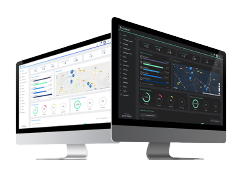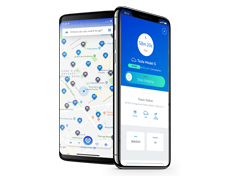
Plastic pollution accelerates climate change
Sustainability | Environment | Pollution | Climate changeLong-term effects of ocean plastic pollution are undeniable: it accelerates climate change and emits powerful greenhouse gases.
We are not fully conscious about how plastic invades our daily life, how it pollutes our seas, glaciers and our lives, but it does, and way too much. Plastic pollution increases climate change and greenhouse effect and threatens our planet; only 9% of total plastic has been recycled!
Consider counting for only one day all the elements that contain plastic and have become part of your day: at home, at work, when shopping, the utensils you use, the clothes you wear, the cosmetics you spend...
You'll end up crazy about adding plastics on your list!
How many plastics are being accumulated around the world?
Too much, but to give you an idea, it’s estimated that about 100 million tons of plastic are manufactured per year. PER YEAR!
Only considering the plastic bottles, one million are bought per minute around the world. If we continue at this frenetic pace of plastics generation, in 2020 it will be reached no more, no less than the terrifying figure of 500 million tons manufactured... This would be 900% more than the amount manufactured in 1980.
But until this becomes real, more than 9 billion tons of plastic have just been manufactured since the beginning of its production in 1950. This is, Greenpeace says, the weight of one billion elephants.
Who takes the cake, without no doubt, is China for being the world's plastic waste leading manufacturer, with 8’82 million metric tons (MMT) per year. It’s followed by Indonesia (3'22 MMT per year), Philippines (1’88 MMT per year), Europe (mainly Germany, Italy, France, Spain and the United Kingdom) and North America, according to the Science Journal.
Our planet is not able to digest plastic
Any item which contains plastic takes hundreds of years to decompose itself, and there are some that can even take up to 1.000 years.
And the head of the matter is not only the manufacture process of this material, but the great part of these plastics are single-use only. This means that, sadly, after their short period of life, they end up in dumping sites or even worse, in our rivers, seas and oceans. In fact, the figure of 8 million tons of plastic dumped per year into seas and oceans has already been reached.
Did you know that only 9% of planet's total plastic has been recycled? Another 12% has been incinerated and the remaining 79% has ended up in the environment.
Greenpeace already anticipated a reality that, unfortunately, we are already living nowadays and that will increase in the near future. And they did it by creating an artwork in 2017 in one of the beaches that throws most plastic into the sea, in order to raise awareness of the world's population.
In April 2018, a real dead whale was found in Murcia (Spain) due to the intake of 29kg of plastic and in June 2019 another one was found in Sardinia (Italy) which, inside its stomach, had 22kg of plastic garbage…
Our seas, rivers and oceans; in serious danger
Long-term effects of ocean plastics pollution are so huge. There are currently 150 million tons of plastic floating in our seas, rivers and oceans, according to the World Economic Forum.
It may come the day when for every 3kg of fish there will be 1kg of plastic.
Marine animals, including plankton, unfortunately consume microplastics and even die because of them. In fact, multiple studies number 200,000 damaged marine mammals and a total of 600 affected marine species.
A picture is worth a thousand words, right? Look at this diver in Bali (Indonesia). Images speak for themselves…
Therefore, plastic pollution causes the contamination of the food chain on which we depend.
We eat plastic day by day
It’s unavoidable that we ingest plastic in our body through the marine foods we consume, which have previously ingested microparticles of this harmful material.
Each of us consumes between 40,000 and 52,000 microplastic particles each year, according to a study published in the scientific journal Environmental Science and Technology. They are indicative numbers, but depending on the consumption of each person we may still consume even more plastic.
In fact, sea salt, sugar and honey are some of the foods that contain most plastic elements, according to the Human Consumption of Microplastics study. And if we also consume bottled water, we get our health even worse, since we boost consumption by 9,000 more microplastics per year!
We should avoid the maximum intake of this type of material, don't you think so?
Maximum alert in the Arctic
Plastic pollution has reached critical levels and has spread all around the world. Scientific researchers from the US have found for the first time in the history, between July and August 2019, microplastics in Arctic sea ice.
And many of you may ask: how on earth is it possible that the plastic particles have slipped through the Arctic? In the same way that plankton filters and accumulates naturally in the ice when water circulates through its pores, microplastics do it too…
It has also been found an island of plastics of almost 2 million km2 in the middle of the Pacific (which is almost three times France), which is added to other 4 large islands found around the world, like the one you have already seen of Bali.
And this discovery comes just after finding plastics in Marianas Trench, the deepest place of the Earth's crust. And it has long been known that snow from multiple countries has high concentrations of microplastics and nanoplastics and that even the most remote places on the planet such as the Bermuda triangle has plastic garbage.
Plastic increases climate change and emits powerful greenhouse gases
What is clear is that a plastic bag doesn’t affect us directly, but its production, incineration or subsequent degradation, definitely yes. These processes emit a series of pollutant gases that increases climate change and greenhouse effect.
In this way, we cause a serious damage to marine fauna and to our health and we generate an alarming pollution to the planet.
On the one hand, the plastics manufacture itself already releases chemicals in the environment. On the other hand, the burning or incineration of plastics also generates highly toxic components that pollute the Earth.
In addition, the environment deterioration and the exposure to solar radiation from plastic waste (either on land or at sea) generates the emission of potent greenhouse gases: methane and ethylene, according to a study published in the journal scientific PLOS ONE.
Did you know that methane, generated by plastic waste, heats the earth 86 times more than carbon dioxide? This makes it a 30 times more potent greenhouse gas than CO2.
In fact, polyethylene (PE) is the main emitter of both gases, and it’s precisely the most common thermoplastic since it’s highly produced worldwide and used in millions and millions of shopping bags.
Therefore, the generation of these greenhouse gases causes a greater acceleration of climate change, affecting the global temperatures of the land and the sea. And to more plastics produced and accumulated, more emitted gases and greater consequences...
Reject single-use plastics
The solution is not using organic plastics (of biological origin) since they mostly continue to be composed, in part, of fossil plastics. In practice, this is only an image clean-up of many brands. The real solution is to get rid of our addiction to single-use plastics.
If you want to be part of the change and perform social responsibility actions, choose to have a Zero Waste lifestyle!
The best option is to avoid all kind of plastics. Any bottle containing this material is classified with an identification code, and the most toxic ones are 3, 6 and 7:
- PET: polyethylene terephthalate or polyester
- HDPE: high density polyethylene
- PVC or V: polyvinyl chloride
- LDPE: low density polyethylene
- PP: polypropylene
- PS: polystyrene
- O: others
So what can we do?
Do not fall into the trap! Nowadays recycling is no longer enough and is necessary changing our habits and applying fully the 5R rule (refuse, reduce, reuse, recycle and rot). We propose you some options:
Do not consume bottled water (it may be polluted by plastic microparticles!). Use a filter and drink from the tap.
Use reusable bags, carts or baskets instead of plastic bags.
Do not buy packaged fruit, meat or fish.
Use compostable or biodegradable garbage bags. And if you have a puppy, also buy biodegradable bags for his/her little poops!
Buy glass bottles instead of plastic ones.
Buy food in bulk as much as possible.
Avoid using glasses, cutlery or plates made of plastic.
Use glass lunch boxes, by heating a plastic one you are poisoning your food!
Consume natural cosmetic products that do not contain microplastics, otherwise you are damaging your body!
Say no to single-one use products such as razors.
Buy eco-friendly clothes.
Use bamboo toothbrush and bamboo ear sticks.
Avoid buying toys that contain plastic, either for your puppy or your baby.
Get rid of synthetic scourers and change to those of natural bristles of sustainable origin or copper ones, 100% recyclable.
Use reusable silicone bags to freeze your food.
If we have achieved that you try to apply any of our tips, this post has already been worth it!
💙 And how Place to Plug contributes to the environment and sustainability?
By empowering you to use electric vehicles offering an end to end solution for the entire EV charging industry, whether if you are an EV driver, a business or an institution!


Leave a comment
Comments ( 2 )
"I practice environmental responsibility by being very conscious about the things I buy. For example, I really like this honey from Amazon: https://www.amazon.co.uk/Pure-Gold-Premium-Select-Manuka/dp/B07VPPGKZM?ref_=ast_sto_dp&th=1 It was produced and collected in the rural unpolluted pastures of New Zealand. Other than that I'm looking into buying an electric car, but it's quite expensive so I'm still considering it. I think that being environmentally responsible is important, but we also have to be realistic. We can't all go out and buy electric cars overnight. But we can make small changes in our lives that will add up over time. "
Thank you for sharing! To Explore Further https://www.360iresearch.com/library/intelligence/plastic-waste-management-services